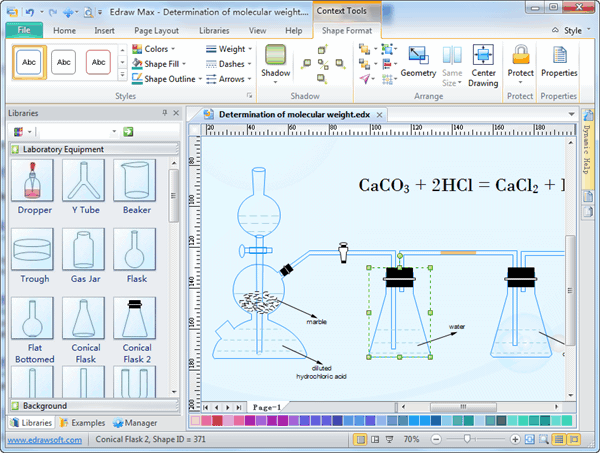Chemistry Level 2
Course Description
Teacher in Charge: Mrs K. Jom.
This course is designed to promote a recognition of chemistry as a distinct scientific discipline with an essential role to play in modern society. This is achieved through the physical properties of substances and simple quantitative chemical calculations. Through practical experience wherever possible, the student is encouraged to develop the necessary practical skills to handle and manipulate equipment safely and to make, record and process chemical observations, especially those relating to qualitative and quantitative analysis.
Topics covered are: Atomic Structure and Bonding, Oxidation and Reduction, Acids and Bases, Organic Chemistry, Equilibrium and Reaction rates, Quantitative and Qualitative Chemistry.
The following standards are the core standards that are available for study at this level. A standard course is made up of 20-23 credits.

Course Overview
Term 1
AS 91164 Demonstrate understanding of bonding, structure, properties, and energy changes.
The study of this standard involves elaborating, justifying, relating, evaluating, comparing and contrasting, or analysing links between bonding, structure, and properties of different substances and the energy involved in physical and chemical changes. This requires the consistent use of chemistry vocabulary, symbols, and conventions.
AS 91167 Demonstrate understanding of oxidation-reduction.
The study of this standard involves justifying, evaluating, comparing and contrasting, or analysing links between oxidation-reduction reactions, observations and equations. This requires the consistent use of chemistry vocabulary, symbols and conventions.
Term 2
AS91165 Demonstrate an understanding of the properties of selected organic compounds.
The study of this standard involves elaborating, justifying, relating, evaluating, comparing and contrasting, or using links between the structure, functional groups and the chemical properties of selected organic compounds. This requires the consistent use of chemistry vocabulary, symbols and conventions.
AS91910 Carry out quantitative analysis.
The study of this standard involves accurately determining the concentration of the substance in the consumer product, including correct use of significant figures and units, justifying how modifying the consumer product sample and/or the titration procedure improved the validity and accuracy of the investigation and evaluating the outcome of the investigation in relation to the consumer product.
Term 3
AS91166 Demonstrate understanding of chemical reactivity
The study of this standard involves elaborating, justifying, relating, evaluating, comparing and contrasting, or analysing chemical reactivity. This requires the consistent use of chemistry vocabulary, symbols and conventions.
Term 4
Revision to prepare for external examinations.
Recommended Prior Learning
Achievement of 16 Credits in Level 1 General Science or Level 1 Advanced Science (including AS90944 and AS90947) is recommended.
Helpful Accompanying Subjects:
• L2 Physics
• L2 Biology
• .L2 Mathematics with Calculus/ Statistics
Pathway
Assessment Information
Three external standards and two internal standards are offered for this course.The two internal standards are assessed during the year in class under exam conditions.
The three external standards are assessed by NZQA at the end of the year.
Credit Information
You will be assessed in this course through all or a selection of the standards listed below.
This course is eligible for subject endorsement.
This course is approved for University Entrance.
External
NZQA Info
Chemistry 2.4 - Demonstrate understanding of bonding, structure, properties and energy changes
NZQA Info
Chemistry 2.5 - Demonstrate understanding of the properties of selected organic compounds
NZQA Info
Chemistry 2.6 - Demonstrate understanding of chemical reactivity
NZQA Info
Chemistry 2.7 - Demonstrate understanding of oxidation-reduction
NZQA Info
Chemistry 2.1 - Carry out a practical investigation into a substance present in a consumer product using quantitative analysis
Pathway Possibilities
Medical Laboratory Technician, Winemaker, Optometrist, Osteopath, Physiotherapist, Radiation Oncologist, Brewer, Mechanical Engineer, Electrical Engineer, Dairy Processing Operator, Physician, Surgeon, Chemical Production Operator, Science Technician, Chiropractor, Civil Engineer, Meteorologist, Medical Laboratory Scientist, Pharmacist, Mining Engineer, Dentist, Medical Radiation Technologist, Diagnostic Radiologist, Dietitian, Registered Nurse, Agricultural/Horticultural Scientist, Forensic Scientist, Agricultural/Horticultural Consultant, General Practitioner, Gynaecologist/Obstetrician, Anaesthetist, Environmental Scientist, Pathologist, Zoologist, Energy/Carbon Auditor, Chemist, Environmental Engineer, Marine Biologist, Medical Physicist, Food Technologist, Forest Manager, Forestry Scientist, Pest Control Technician, Microbiologist, Chemical Engineer, Biochemist, Biomedical Engineer, Biotechnologist, Naturopath, Veterinarian,
 Liston College
Liston College